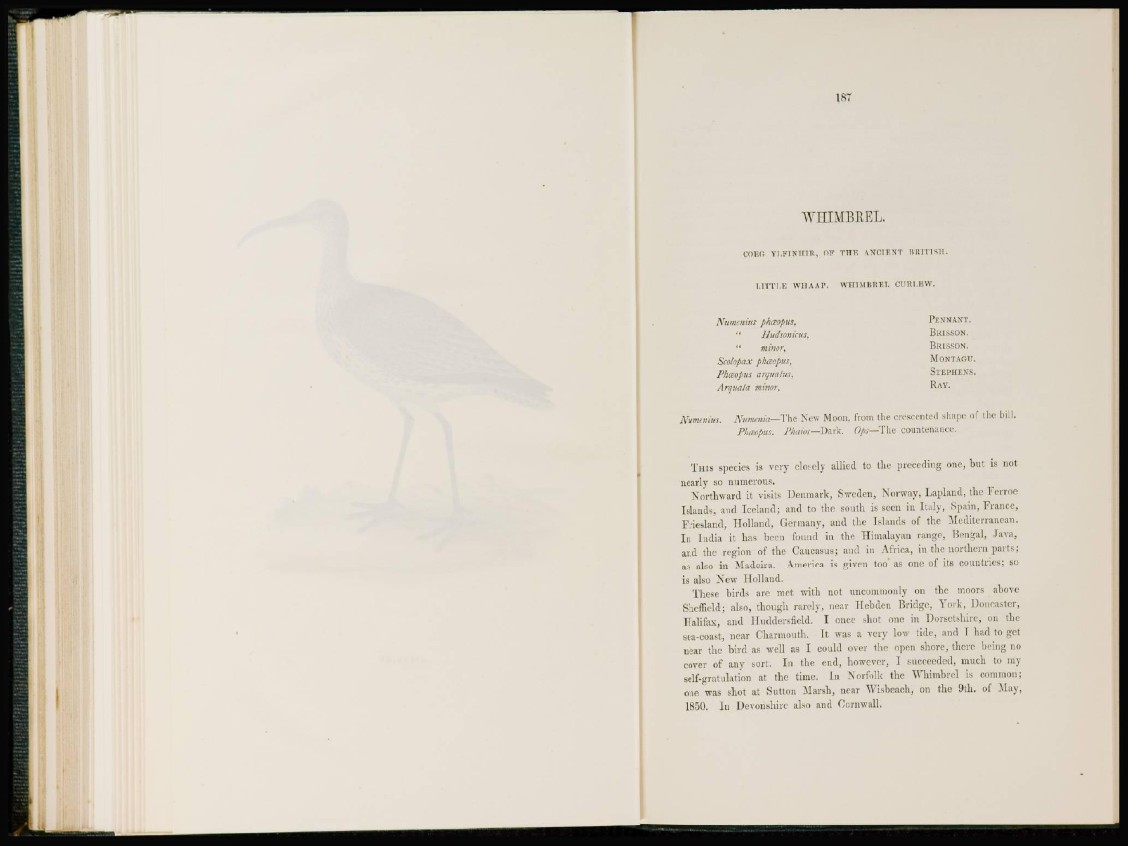
WHIMBfiEL.
COEG YI.FTNITTll, OF THE ANCIENT BRITISH.
1.ITT1 B WI1AAP. WITTII HR EL CURLEW.
Xumenius phaopus,
" Hudsoninis,
" minor,
Stohpax phaopus,
Phaopns arquatits,
Arquata minor,
PENNANT.
BKISSON.
BRISSON.
MONTAGU.
STEPHENS.
RAY.
Nunnnius. Nunnnia—The New Moon, from the cresccnted shape of the bill.
Pluropus. Phaios—Dark. Ops—The countenance.
THIS species is very closely allied to the preceding one, but is not
nearly so numerous.
Northward it visits Denmark, Sweden, Norway, Lapland, the Ferroe
Islands, and Iceland; and to the south is seen in Italy, Spain, France,
Fricsland, Holland, Ccrinany, and the Islands of the Mediterranean.
I n India it has been found in the Himalayan range, Bengal, Java,
and the region of the Caucasus; and in Africa, in the northern parts;
as also in Madeira. America is given too as one of its countries; so
is also New Holland.
These birds are met with not uncommonly on the moors above
Sheffield; also, though rarely, near Ilebden Bridge, York, Doncaster,
Halifax, and I luddersfield. I once shot one in Dorsetshire, on the
sea-coast, near Charmouth. It was a very low tide, and I had to get
near the bird as well as I could over the open shore, there being no
cover of any sort. In the end, however, I succeeded, much to my
self-gratulation at the time. In Norfolk the Whimbrel is common;
one was shot at Sutton Marsh, near AVisbcach, on the 9th. of May,
1850. In Devonshire also and Cornwall.